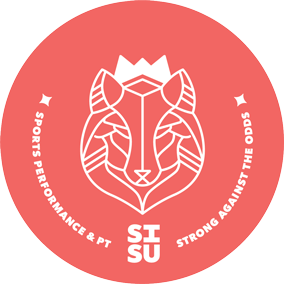One of the most common complaints of pain I hear, working with athletes at Sisu Sports Performance & PT in Seattle, is that of anterior knee pain (ie. pain on the front of the knee). Anterior knee pain, or more commonly diagnosed as patellofemoral pain (PFP), accounts for approximately 20% of those who present to their primary care physician with complaints of knee pain [1]. Within my practice, knee pain accounts for up to 60% of patient complaints.
Anterior knee pain is usually associated with activities that load the knee cap. I typically hear patients complain of pain in their knee with activities like hiking down a mountain, running, doing squats or lunges, or even the stairs. Sometimes the pain will be sharp and localized to a very specific point. The pain can also be a bit more general, described as “achy” with things like prolonged sitting. Often, patients will inform me that they have stopped physical activity as a result of this pain, or that the pain has made performing physical activity difficult.
Research has shown us that about 25% of athletes with anterior knee pain will stop participating in sports because of their pain [1]. As it turns out, anterior knee pain will also affect more women than it does men. As a provider and coach who aims to keep women and girls involved in sport, this is a truth I’m working to change on a daily basis.
While successful treatment for anterior knee pain completely depends on the individual, research shows us that strengthening of key muscle groups can be highly effective [1,2].
So, what strengthening exercises can you do?
There are loads of strengthening exercises available to the consumer and each person is different when it comes to what will work best, but the literature tends to show us that strengthening of the hips, knees and trunk are great areas to focus on when anterior knee pain is at play [1,2].
In my practice, working with a lot of female athletes, there are definitely common recommendations and exercises I will work in to a patient’s program when they come to me with knee pain.
The first thing I will recommend to athletes is that they prioritize a warm-up routine. For adults in particular, a warm-up is a lost art and one which if reinstated, can have significant benefits in reducing pain and injury. For soccer athletes, that typically will look something similar to the exercises in this –> blog article I wrote a while back.
For other athletes, such as runners, it might look like doing a 10 minute fitness walk before they run. Whatever the athlete can do to fit in a warm-up, I will encourage. A warm-up is an essential ingredient for a successful and healthy athlete of any level.
The second is the recommendation I will most frequently make, which would be to perform consistent and regular strengthening exercises of the hips, knees and trunk. I want my clients to master the following exercises before we move on to other tasks. Adding in load is a way to make the exercise difficult enough to foster the benefits we aim to see.
As such, the exercises below are my favorites. They target the hips (gluteal musculature), the knees (quadriceps and hamstrings), and challenge balance and stability through asymmetrical loading of the trunk (core). All of which have been shown to be important in the treatment of knee pain [1,2].
1. Banded lateral toe taps
2. Single leg bridge
3. Front squat – dumbell
4. Weighted step up
As always, thank you for reading!
Sisu Sports Performance & PT is accepting new clients and we would love to help you get back to doing what you love!! Feel free to send me an email or give me a call if you have any questions.
Cheers,
Dr. Ellie Somers
Your sports physical therapist
Resources:
1. Peterson W, et al. Patellofemoral pain in Athletes. J Sports Med. 2017 Jun 12;8:143-154
2. Nascimento LR, Teixeira-Salmela LF, Souza RB, Resende RA. Hip and Knee Strengthening Is More Effective Than Knee Strengthening Alone for Reducing Pain and Improving Activity in Individuals With Patellofemoral Pain: A Systematic Review With Meta-analysis. J Orthop Sports Phys Ther. 2018 Jan;48(1):19-31.






